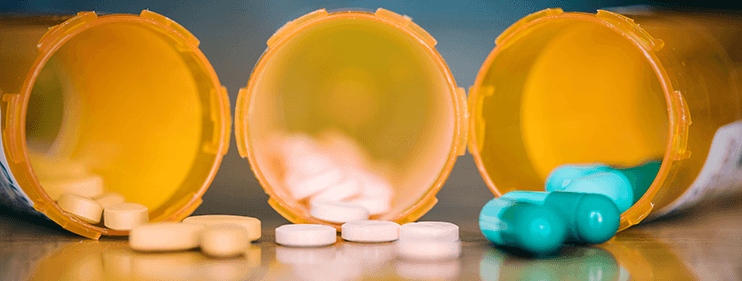How To Safely Dispose Of Opioids And Pain Medication

Do you have old opioids or pain medications in your medicine cabinet that you no longer use? As many as 92 percent of people recovering from surgery stop taking their medications before the pills run out. Yet, only about one-quarter practice proper medication storage or opioid disposal. These drugs can be dangerous in the wrong hands, so you must know how to properly dispose of them. Learn how to dispose of expired, unwanted, or unused medicines by considering the following options.
Drug Take Back Programs
Safe drug disposal programs are the ideal method of opioid disposal. The U.S. Drug Enforcement Administration (DEA) sponsors a bi-annual National Prescription Drug Take-Back Day in the spring and fall. These Take-Back Days are designed to provide a safe and convenient way to dispose of prescription drugs while educating the public about the dangers of opioid abuse. When visiting a Drug Take-Back Program, don’t bring in any pill bottles that include personal information on them for security purposes. To find a Take-Back location near you, visit the Take Back Day website.
Drug Disposal Collection Sites
If you missed Drug Take-Back Day, there are several year-round drug drop-off locations where you can dispose of your prescription drugs anonymously at authorized collection sites. Sponsored by the DEA, find a nearby Controlled Substance Public Disposal Location on the DEA website. Or, learn about the American Medicine Chest Challenge for another opioid disposal option. Many pharmacies such as Walgreens and CVS are also beginning to offer similar opioid disposal services.
Opioid Disposal at Home
When a Take-Back program or Drop-Off collection site isn’t available, there are two ways to dispose of medicine at home. The method is largely based on which type of medicine you’ll be disposing of. While home disposal is a safer alternative than keeping prescriptions unattended in your home, this practice may have a negative impact on the environment. But based on the available data of very low, but measurable levels of medications in rivers and streams, the U.S. Food and Drug Administration (FDA) believes that the known risk of harm to humans from accidental exposure to these medicines far outweighs any potential risk to the environment from flushing them.
Flushing Medicine
The flushing method is recommended for medication that can be dangerous to others. When prescription drugs are expired, unwanted, or unused, many of them include specific directions to flush down the toilet or sink when another disposal method is not available. To see if your medicine needs to be flushed, review the prescription label or patient information pamphlet. Or, review the FDA’s list of medicines recommended for disposal by flushing. Specifically, the highly addictive opioid fentanyl should be flushed down the toilet immediately, once no longer in use, to reduce the danger of an unintentional overdose.
Throwing Medicine in the Garbage
If you choose to dispose of your medication in the garbage, the FDA suggests taking the following steps:
- Mix the drugs with something undesirable, such as used coffee grounds, dirt, or cat litter. This makes the medicine less appealing to children and pets and unrecognizable to someone looking for drugs.
- Put the mixture in something you can close (a zipper storage bag, empty can, or other container) to prevent the drug from leaking or spilling out.
- Throw the container in the garbage.
- Remove your personal information from the empty medicine packaging to protect your identity and privacy.
Combat the Opioid Epidemic
You can do your part to address the ongoing opioid epidemic by properly disposing of our unused prescription medications. We’re proud to teach regional anesthesia techniques with our Block Buddy Pro app that help patients avoid strong, addictive pain medications. To learn more, click here to learn how regional nerve blocks are the non-opioid alternative for chronic pain relief, and click here to learn more about how you can reduce and avoid opioid abuse.

